In this blog, we look at scarification, one of the cornerstones of good lawn care. Some lawns will begin to suffer without scarification, as debris from growing grass will start to build up and cause more deep-rooted problems. Turfonline is here to help you through every step of the process, from what you need to scarify your lawn, to when the best time to scarify is and how to revive your lawn after scarifying.
What is Scarifying?
Essential for lawn care, scarification is the removal of organic matter from around the stem of the grass plant to maintain a healthy growing environment above and below the surface. Organic matter can be dead grass blades, lawn clippings and every lawn lover’s nemesis – moss. When you scarify or rake a lawn, it is important this matter is cleared to improve growth and soil health.

The closest analogy for scarifying a lawn is grooming your pet during the moulting season. Like scarifying, grooming gets rid of all the dull, lifeless, untidy-looking hair in your pet’s coat or fur, giving the skin a chance to breathe and leaving the coat looking rather splendid.
How Often Should You Scarify Your Lawn?
First and foremost, if you have a newly-turfed or newly-seeded lawn, do not even think about scarifying or raking until the sward is well established. You’ll do more harm than good. If you rake a lawn before it has fully established, your hard work may be undone and your turf may need to be re-laid.
You should scarify your established lawn once a year, but some lawn owners prefer to do the job once every two or three years. However, as with all things in lawn care, little and often works best. Instead of having to go in hard and remove a lot of material which may then necessitate seeding and topdressing, you will be in much better control of the thatch and moss with more regular scarifying and enjoy a faster recovery time too.
When is the Best Time to Scarify Your Lawn?
Spring is the optimum time to scarify a lawn. However, you might be tempted to scarify in autumn so that you can enjoy the bulk of the summer weather in peace, so we tend to say the best time in autumn is between September and October. If you do choose to scarify in autumn, don’t go in full guns blazing, as a gentle autumn scarification can encourage grass to thicken up before the frost hits.
What Tools Do I Need?
If you are feeling strong, a spring tine rake will do the job admirably. Be careful not to remove all the thatch as it’s there to protect the delicate growing parts of the plant. On the other hand, too much thatch will slow down the drainage and restrict airflow. So the key is to find a happy medium.
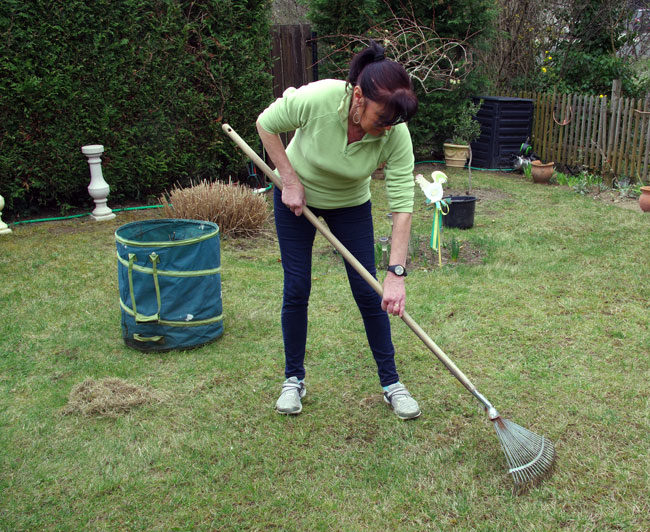
If your lawn is too big for a spring tine rake to scarify, hire a scarifying machine to do the job, which is far easier and can be bought online or hired from your local tool hire shop. Share the hiring with your neighbour to cut costs! Or better still bring in a reputable lawn care service to do it all for you.
How to Scarify Your Lawn
Firstly, mow your lawn with the blades set at a 2cm height. You don’t want to be scalping it, especially not in autumn. A 2cm is not too hard on the plants but gives you less grass to wrestle with. Be sure to remove all of the clippings once you’ve finished.
When it is time to scarify your lawn, start gently at first. Go over the whole lawn working in one direction and remove the uppermost centimetre or so of loose thatch. Use a rake or a leaf blower to remove all the debris.
On the next pass, work at right angles to the first pass. So if you were working North-South the first time round, this time, go East-West. This time you will find the thatch is a little looser and so you can work a little easier or set the machine blades slightly lower. Don’t get complacent though, as you could massacre your lawn if proper care isn’t taken.
In autumn, two passes are enough to do the job, but in spring, you’d do well doing three or four passes, especially if the lawn was in a bad way to start with.
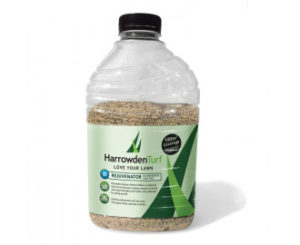 |
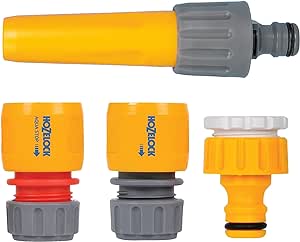 |
|
 |
 |
How to Revive a Lawn After Scarifying
After you’ve scarified your lawn and it’s on its way to growing back better, you should water and feed the lawn before seeding if you haven’t done so already. With the ground prepared, spread 20-30mg of seed per square metre and pay particular attention to bare patches from the scarifying. Getting the seeds in contact with the soil properly is essential, and there are 2 ways that you can ensure this. First, you can lightly rake over the soil and seeds, and tread them in by walking over the area. Alternatively, you can use a roller to push them in.
After seeding, water the area immediately. You should continue to do so regularly for about two weeks. If there is a lot of rain, you can hold back a little on the watering, but if it’s dry, you need to do so every day.
More Lawn Care Articles
Read our guide to autumn lawn care jobs here.
Find out how to deal with weeds in your lawn here.
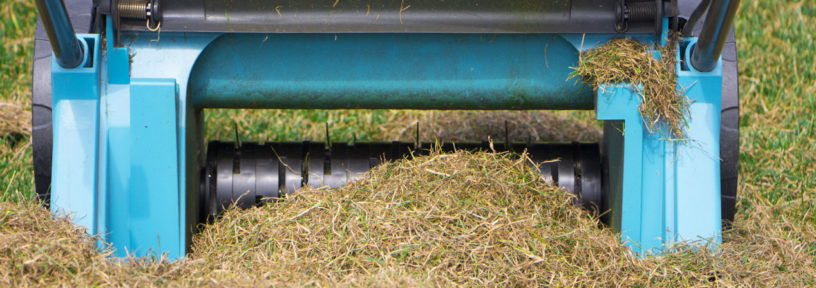
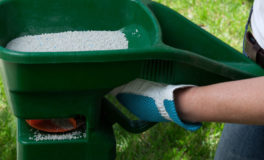 Spring lawncare jobs – feeding your lawn
Spring lawncare jobs – feeding your lawn 

